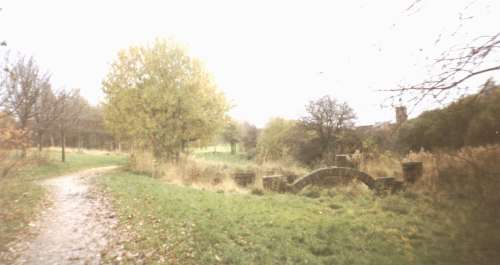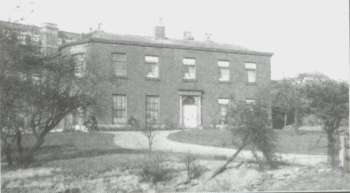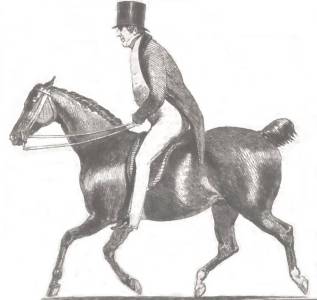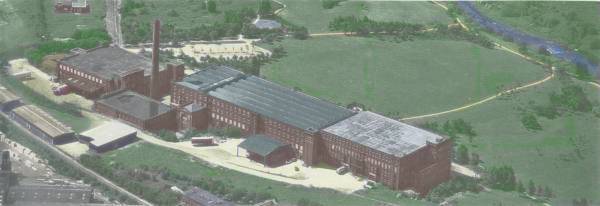Brief History of Bury - Page 3
Industrial Development
By the end of the 18th century other industries began to develop alongside woollens. The most important were cotton weaving, calico printing, bleaching & dying of cloth, and later papermaking.
One of the first of the new factories was set up by Robert Peel and William Yates, initially located in Butcher Lane but moving to a larger site for calico printing at Bury Ground (alongside the Irwell off Castlecroft Road) in 1792. They were the biggest local concern in the cotton industry and operated six other mills in the district, involved in cotton manufacturing and bleaching as well as printing.

The stonework to the right centre is virtually the only remains of the early factories at Bury Ground. This photograph was taken several years ago and the arch has since collapsed and the site is now very overgrown.
The firm of Peel and Yates was able to obtain high prices for printed cloth; profits reached £700,000 per year by 1800, allowing Robert Peel to donate £10,000 to the government in 1797, in return for which he was granted a baronetcy.
His son, Sir Robert Peel the younger, was born at the family home of Chamber Hall, alongside Bury Ground, on 5th February 1788. The house was demolished in the early 1900s and the site is now an electricity substation and a steel fabricator's yard.

Chamber Hall in 1895, picture from 'Bury, a photographic history of your town'.
The younger Robert Peel was home secretary 1822-1830 and Conservative prime minister 1834-1835 and 1841-1846. He is best remembered for founding the London police force (1829), and for repealing the Corn Laws (1846), resulting in lower prices for bread.

A contemporary drawing of Robert Peel the younger.
The Peel family left the Bury area early in the 19th century but their name was used for Peel Mills, constructed between 1885 and 1915 to one side of Bury Ground. Cotton spinning ceased at Peel Mills in 1975 and the company, now known as Peel Holdings, moved into property development.

Peel Mills from the air, looking towards the south-west, with Bury Ground, off Castlecroft Road, behind. There were formerly several small reservoirs on Bury Ground supplying the factories and fed from weirs on the Irwell alongside. Since this picture was taken No1 Mill at the left-hand side, which was built in 1885-1887, has been demolished and replaced by a modern building.
The site of Chamber Hall is in the top left hand corner of the picture.
Paper-making required waste cotton rags as a raw material and chlorine bleaching facilities. It therefore fitted in well with the textile industry and by 1800 there were eight paper mills in Bury.
The increasing manufactured output in the town necessitated good transport links, especially to the warehouses of Manchester. The Manchester, Bolton and Bury Canal opened in 1796 and Bury New Road was rebuilt in 1827. The canal also allowed coal to be brought in from the several collieries along its length to feed the steam engines which were beginning to replace water power. However the heyday of the canal was quite short and from the 1840s onwards the new railway links began to take over much of the carriage.



